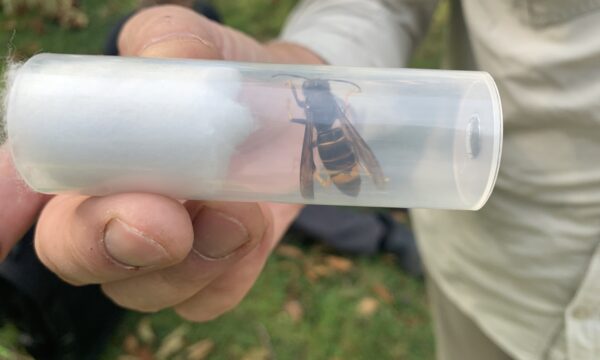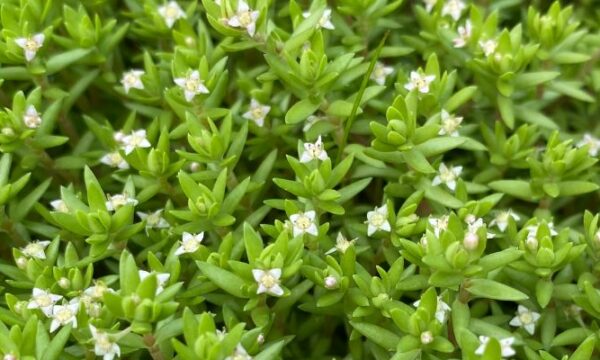
The Global Forum on Agricultural Research (GFAR) has blogged about CABI’s activities in its ‘Partner Spotlight’ feature (12-15). One of these was our new invasive species programme which is re-posted here.
Millions of people living in rural communities around the world face problems with invasive species –animals, diseases, insects and plants – that are out of control and have resulted in damage costing more than an estimated US $1.4 trillion globally (Pimentel et al 2001). Yet, while we may have heard about the threats of losing biodiversity, some may have never considered how the addition of a species could be a detriment to agriculture and farmers.
Their stories tell us how.
Africa

Grace Kiseku is the Assistant Head of her village near Lake Baringo, Kenya. She and her neighbours are pastoralists. They graze their livestock (sheep, cattle and goats) on the land around the village. But her cattle are dying. They are affected by prosopis (Prosopis juliflora), an invasive weed which is threatening her and her neighbours’ livelihoods. The plant is taking over, meaning the animals are forced to eat its pods. They don’t provide the livestock with enough of the right nutrients, so her animals are starving to death.
[youtube https://www.youtube.com/watch?v=cxEWkARgTck]
Asia

Ng Han Chew is a farmer in Malaysia. The invasive weed Parthenium (Parthenium hysterophorus) is taking over his farm. He says, “It interferes with my crops by stealing their fertilizer and my plants are now showing symptoms of malnutrition. I struggle to control this weed as it’s spreading very rapidly. Even when I’m using chemicals the weed comes back. There is no permanent control for it.”
[youtube https://www.youtube.com/watch?v=B9BF3nNYtpE?list=PLA6tUPK41nmhArVWwvxcoZDdgky4bhcIQ]
So, even though it may be difficult to believe that an invasive weed can cause so much damage, farmers like Grace and Ng Han Chew are living with this harsh reality every day. Invasive species badly affect people’s livelihoods by destroying crops and good farmland, depleting water resources and even poisoning humans and livestock. They have also been identified as the second greatest threat to biodiversity after habitat loss.
CABI, with expertise in biocontrol and pest management, is working in rural communities, helping people like Grace and Ng Han Chew to overcome their problems with invasive species so that they can improve their livelihoods. Over the coming months and years, CABI will focus on tackling some of the worst invaders in Africa and Asia – weeds, insects and diseases that devastate crops and pastureland, as well as deplete the many natural resources on which rural communities rely. Left unmanaged, these species threaten investments in development, undermine climate change adaptation measures and can even act as havens for disease-carrying insects such as mosquitos.
At its Review Conference of Member Countries in July this year, CABI launched a major new initiative to protect vulnerable rural communities in the fight against invasive species. Building on its 100-year track record in invasive species management, CABI will deliver a unique global programme to support 50 million vulnerable African and Asian farming families impacted by species that are out of control and threatening their livelihoods. This will link with, and build upon, the highly successful CABI-led Plantwise programme, which has already reached nearly five million farmers in 34 countries.
The invasive species programme has been designed to manage biological invasions using the internationally recognised three-stage approach of prevention, early detection and rapid response, and control and restoration. All three stages will use tools to share information and data about the invasive species, including species diagnosis, distribution, risk assessment and introduction or spread prevention. The programme will establish regional, national and local partnerships across sectors, and involve stakeholders in running and evaluating sustainable programmes for invasive species’ prevention, early detection, and control.
We will have succeeded when we see locally adapted management, increased awareness of the problems and solutions, distribution data collected, and ICT resources that help stakeholders (including vulnerable groups) to learn, to generate and to share information and make better decisions.
As a Partner in GFAR, this work demonstrates CABI’s significant contribution to preserving beneficial agro-biodiversity through multi-stakeholder action, and to building capacities for change through access to the right knowledge. The programme also aligns CABI’s work directly with specific targets of the Sustainable Development Goals (SDGs), in this case SDG 15: ‘Life on Land’ and Aichi biodiversity target 9.

To learn more about the impact of invasives species on livelihoods, see: http://www.invasive-species.org/ or read our brochure. To get regular news on this subject, or show your support, sign up to our Invasive Species Newsletter.
Related News & Blogs
Training on mass production of entomopathogenic nematodes for biological control of invasive insect pests
A team of global experts in the production of biocontrol agent provided a practical training on the mass culture of entomopathogenic nematodes at the Biocontrol Agent Facility of Rwanda Agriculture and Animal Resource Development Board (RAB), writes Dr…
20 December 2023




